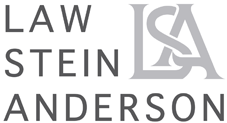Navigating Undue Influence in Trust Contests: Proof from Circumstantial Evidence

Trusts are powerful tools for individuals to manage and distribute their assets. Furthermore, they ensure their wishes are carried out after their passing. In addition, trusts ensure family members avoid the unnecessary costs and delays associated with probate. But what happens when an individual’s trust terms do not actually reflect that individual’s true intentions because of the undue influence of another person?
In California, as in many other states, the creation and execution of a trust must adhere to strict legal standards. One critical aspect underlying trust law is the prohibition against undue influence. This is a legal concept referring to the overwhelming pressure put on a person that overcomes that person’s own free will. This concept plays a significant role in legal actions brought to challenge trusts and trust amendments. In this article, we will explore California’s laws surrounding undue influence in trust contests. We provide a comprehensive understanding of how the laws offer aggrieved parties legal recourse to right the wrongs of those who may bully, deceive, and otherwise wrongfully push their way into a person’s estate plan.
Understanding Undue Influence
Undue influence refers to a situation where one person exerts excessive pressure or manipulation on another person to influence their decisions. It is often related to their financial or estate planning matters. Under California law, it is defined as “excessive persuasion that causes another person to act or refrain from acting by overcoming that person’s free will and results in inequity.” Wel. & Inst. Code § 15610.70; Prob. Code § 86. When it comes to trust contests in California, undue influence is a critical issue because it can undermine the intent and purpose of the trustor.
California law recognizes that trustors should have the freedom to make their own decisions about how their assets will be distributed without external pressures or manipulations. To address this concern, the state has implemented various laws to safeguard the integrity of trusts against undue influence. Under California Probate Code § 17200(b)(3) and related case law, a trustee or beneficiary (including beneficiaries previously included in a trust) may petition the court to determine the validity of a trust or a trust provision. Undue influence constitutes grounds for invalidation of all or a portion of a trust.
For a court to determine whether a trust or trust amendment was produced by undue influence, under California Welfare and Institutions Code § 15610.70, all of the following factors are required to be considered:
(1) The vulnerability of the victim.
Evidence of vulnerability may include incapacity, illness, disability, injury, age, education, impaired cognitive function, emotional distress, isolation, or dependency. Moreover, it includes whether the influencer knew or should have known of the alleged victim’s vulnerability.
(2) The influencer’s apparent authority.
Evidence of apparent authority may include status as a fiduciary, family member, care provider, health care professional, legal professional, or spiritual adviser.
(3) The actions or tactics used by the influencer.
Evidence of actions or tactics used may include the following.
- (A) Controlling necessaries of life, medication, the victim’s interactions with others, access to information, or sleep.
- (B) Use of affection, intimidation, or coercion.
- (C) Initiation of changes in personal or property rights, use of haste or secrecy in effecting those changes, effecting changes at inappropriate times and places, and claims of expertise in effecting changes.
(4) The equity of the result.
Evidence of the equity of the result may include the economic consequences to the victim. Further, it includes any divergence from the victim’s prior intent or course of conduct or dealing and the relationship of the value conveyed to the value of any services received. It also depends on the appropriateness of the change in light of the length and nature of the relationship.
Who has the Burden of Proof?
Clear and Convincing Evidence
To successfully contest a trust based on undue influence, the contestant must prove by clear and convincing evidence that undue influence indeed occurred. This higher burden of proof ensures that allegations of undue influence are thoroughly scrutinized and substantiated.
Shifting the Burden of Proof
In certain circumstances, the burden of proof can be shifted to the person benefitting from the trust or amendment in question. Then, the person who may have committed the undue influence will be the one required to prove they did not do so. They must then meet the high standard of clear and convincing evidence.
The following facts must be demonstrated to shift the burden of proof to the accused individual.
- A confidential (close, trusting) relationship between the individual alleged to have committed the undue influence and the person who signed the trust or amendment.
- The individual’s active participation in the procurement of the contested trust document.
- An undue benefit conferred on the individual by the trust or trust amendment.
Shifting by Statutory Presumption
California Probate Code Section 21380 et seq. further establishes certain statutory presumptions regarding undue influence. If certain factors are present, the law presumes undue influence, shifting the burden of proof to the person benefiting from the trust. For example, the law automatically shifts the burden of proof for all trusts and amendments in which gifts are made to the person who drafted it, in which gifts are made to a care custodian of a dependent adult. These presumptions further apply to employees, relatives, and cohabitants of these persons, with certain exceptions.
Challenges and Complexities
While California’s legal framework provides strong protection against undue influence in trust contests, proving undue influence can be challenging. It often involves complex legal and factual issues, such as establishing the existence of a confidential relationship or demonstrating that the trustor’s decision was the result of coercion or manipulation.
Furthermore, disputes over trusts can be emotionally charged, pitting family members against each other in court battles. Balancing the protection of vulnerable individuals from undue influence with the respect for a trustor’s autonomy is a delicate matter.
Proving undue influence may seem challenging. However, it can be established through circumstantial evidence, a powerful legal tool.
Understanding Circumstantial Evidence
Circumstantial evidence, also known as indirect evidence, relies on inferences to establish a fact. Unlike direct evidence, circumstantial evidence relies on the logical deduction of facts based on surrounding circumstances. In cases of undue influence, where there may not be direct witnesses to the manipulation, circumstantial evidence becomes essential in uncovering the truth.
California recognizes the significance of circumstantial evidence in proving undue influence in trust and estate disputes. Courts in California are well aware that undue influence often occurs behind closed doors. Therefore, it is challenging to provide direct evidence of the manipulation.
Some Factors that May be Used to Prove Undue Influence with Circumstantial Evidence
The Relationship
Demonstrating that there was a confidential or fiduciary relationship between the influencer and the victim is crucial. This can be established through circumstantial evidence by showing a pattern of close involvement in decision-making.
Isolation
Undue influence often thrives in isolation. If the alleged influencer isolated the victim from friends and family, this can be powerful circumstantial evidence.
Sudden Changes
Abrupt and unexplained changes in estate planning documents or financial transactions can raise suspicions. When such changes coincide with the alleged influencer’s involvement, it strengthens the case.
Inconsistent Wishes
A trustor’s wishes appearing to be inconsistent with their values can be seen as circumstantial evidence of undue influence.
Dependency
Demonstrating that the victim was heavily dependent on the alleged influencer can provide compelling circumstantial evidence.
Witness Testimonies
Testimonies from friends, family members, or experts who can testify to the victim’s altered behavior can be instrumental in building a case.
If you’re involved in a trust contest, seeking legal counsel from an experienced attorney who specializes in estate and trust litigation is crucial. We can help you navigate the complexities of undue influence allegations. We’ll ensure that your rights and interests are protected in accordance with California’s trust contest laws. Contact us today to learn more.
